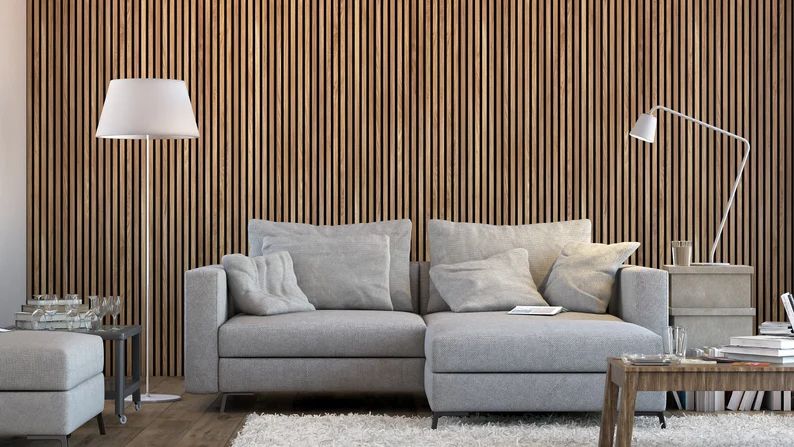Acoustic wood panels have become an essential element in modern design, balancing both aesthetic beauty and practical functionality. These panels offer homeowners, businesses, and DIY enthusiasts a versatile solution for soundproofing and interior enhancement. In this article, we’ll explore the top benefits of acoustic wood panels, providing insights into why they’re a popular choice for many.
1. Enhanced Sound Absorption
One of the most notable benefits of acoustic wood panels is their ability to significantly improve sound quality within a space. This is particularly beneficial in areas prone to excessive noise, such as offices, recording studios, or even busy living spaces.
Why is sound absorption important?
- Reduces Echo and Noise: Acoustic wood panels help minimize echoes and reduce noise levels, creating a more comfortable and peaceful environment.
- Improves Communication: By absorbing unwanted sounds, these panels make conversations clearer, improving interactions in workplaces and public areas.
- Optimizes Acoustics for Home Theaters: They are perfect for enhancing sound quality in home entertainment setups.
Key Takeaway: Acoustic wood panels make a noticeable difference in sound clarity, making them ideal for both residential and professional use.
2. Aesthetic Appeal
Acoustic wood panels do more than just improve sound quality—they add a touch of elegance to any space. With a wide variety of designs, textures, and finishes available, these panels can be tailored to match various interior styles.
Types of Wood Panel Designs:
- Slatted Panels: Perfect for creating a modern, streamlined look.
- Grooved Panels: Add a touch of sophistication and classic charm.
- Custom Finishes: Panels can be painted or stained to match existing décor.
Description List:
- Natural Wood Finishes: Highlight the warm, earthy tones that complement any room.
- Painted Panels: Ideal for those who want to add a pop of color while retaining sound-absorbing functionality.
By choosing acoustic wood panels, homeowners and designers can enhance their spaces visually while reaping the functional benefits of sound absorption.
3. Eco-Friendly Nature
In an era where sustainability is more important than ever, acoustic wood panels stand out as an environmentally friendly option. Many panels are made from renewable resources and are manufactured using eco-conscious practices.
Benefits of Choosing Eco-Friendly Panels:
- Sustainable Materials: Panels often use wood from sustainable forestry practices.
- Low Environmental Impact: Compared to synthetic soundproofing materials, wood panels have a smaller carbon footprint.
Comparative Table
| Material Type | Sustainability Level | Carbon Footprint |
|---|---|---|
| Acoustic Wood Panels | High | Low |
| Foam Panels | Low | High |
| Synthetic Fabrics | Medium | Medium |
Choosing acoustic wood panels not only enhances your space but also supports environmentally responsible decisions.
4. Durability and Longevity
When investing in home improvement products, durability is a top concern. Acoustic wood panels excel in this area, offering long-lasting performance with minimal maintenance.
Why Acoustic Wood Panels are Durable:
- Strong Build: Made from quality wood, these panels resist wear and tear.
- Minimal Upkeep: Regular dusting and occasional polishing keep them looking new.
- Moisture Resistance: Certain wood treatments provide protection against moisture, increasing their lifespan.
Maintenance Tips:
- Dust panels regularly with a soft cloth.
- Use wood-safe polish to maintain their natural shine.
- Avoid excessive exposure to direct sunlight to prevent discoloration.
Pro Tip: Installing acoustic wood panels in areas with high foot traffic or in commercial settings ensures sound quality while maintaining durability.
5. Ease of Installation and Customization
For DIY enthusiasts and professionals alike, acoustic wood panels offer a user-friendly installation process. This makes them a practical choice for anyone looking to enhance their space without significant labor or cost.
Simple Steps for Installation:
- Measure the Space: Ensure you have accurate measurements to fit the panels precisely.
- Prepare the Surface: Clean the wall and ensure it’s smooth for optimal adhesion.
- Apply Adhesive or Mounting Clips: Depending on the type of panel, use suitable installation methods.
- Align and Press: Place the panels carefully, pressing them against the wall for secure attachment.
- Secure and Finish: Use finishing nails or screws if needed for extra support.
Customization Options:
- Panels can be cut to fit unique wall shapes.
- Various finishes and textures offer endless design possibilities.
Ease and Flexibility: Acoustic wood panels allow for quick upgrades to both home and office spaces, making them a go-to for renovations.
FAQs
1. What are the primary benefits of acoustic wood panels?
The primary benefits include enhanced sound absorption, aesthetic appeal, eco-friendliness, durability, and ease of installation.
2. Are acoustic wood panels environmentally friendly?
Yes, they are often made from sustainable materials and have a lower environmental impact than synthetic alternatives.
3. Can I install acoustic wood panels myself?
Yes, with basic tools and preparation, DIY installation is manageable for most homeowners.
4. How do I maintain acoustic wood panels?
Maintenance is simple: dust regularly, use wood-safe polish, and avoid direct sunlight to keep them in top condition.
5. Do acoustic wood panels come in different styles?
Absolutely. You can find panels in various designs, such as slatted, grooved, and with custom finishes to suit your taste.
Conclusion
Acoustic wood panels combine functionality and beauty, making them an excellent addition to any space. From superior sound absorption to eco-friendliness and long-lasting durability, these panels offer a range of benefits that meet the needs of homeowners and businesses alike. Whether for aesthetic improvement or practical soundproofing, acoustic wood panels are a smart, versatile choice.
Incorporate acoustic wood panels into your next home or office project to enjoy a blend of style, sustainability, and functionality.








